Goa Gajah
Tags : Temple
Timings : 8:00 AM - 4:30 PM
Entry Fee : Adults: IDR 15,000,
Children: IDR 7,500
Elephant Caves
Ways to Experience this attraction
Goa Gajah, Bali Overview
A few kilometres from Ubud, Indonesia, Goa Gajah or the "elephant cave" is a spiritual and cultural attraction filled with Buddhist and Shaivite relics and carvings. A wide-eyed demon-like structure welcomes you at the cave entrance, which further leads to a serene pool inside. The intricate stonework makes this a must-visit for anyone looking for a glimpse into Indonesian architecture and heritage.
Depicting the history and architecture of the ancient Bali Kingdom, Goa Gajah is one of the prominent historical sites in Bali. 6 km away from central Ubud, the caves are located in the Bedulu village of West Bali. Goa Gajah is fondly called as the 'Elephant caves' due to the depiction of various elephant structures that are spread all across the cave complex. It was primarily built as a meditation centre when the Balinese Kingdom ruled over the island. The sculptures adorning the caves were made to keep the evil away from the kingdom. Over a period of time, this ancient temple has turned to ruins, giving visitors insights into the old and ancient Balinese culture.
Read More on Goa Gajah
History of Goa Gajah Caves
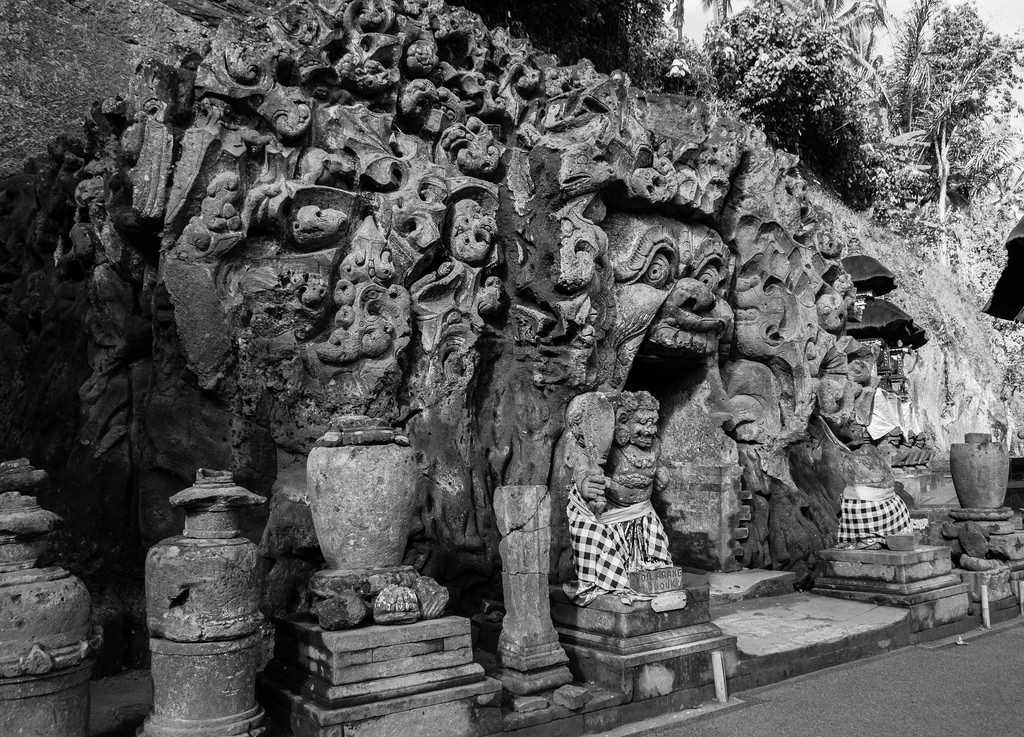
Significance of the Goa Gajah Caves
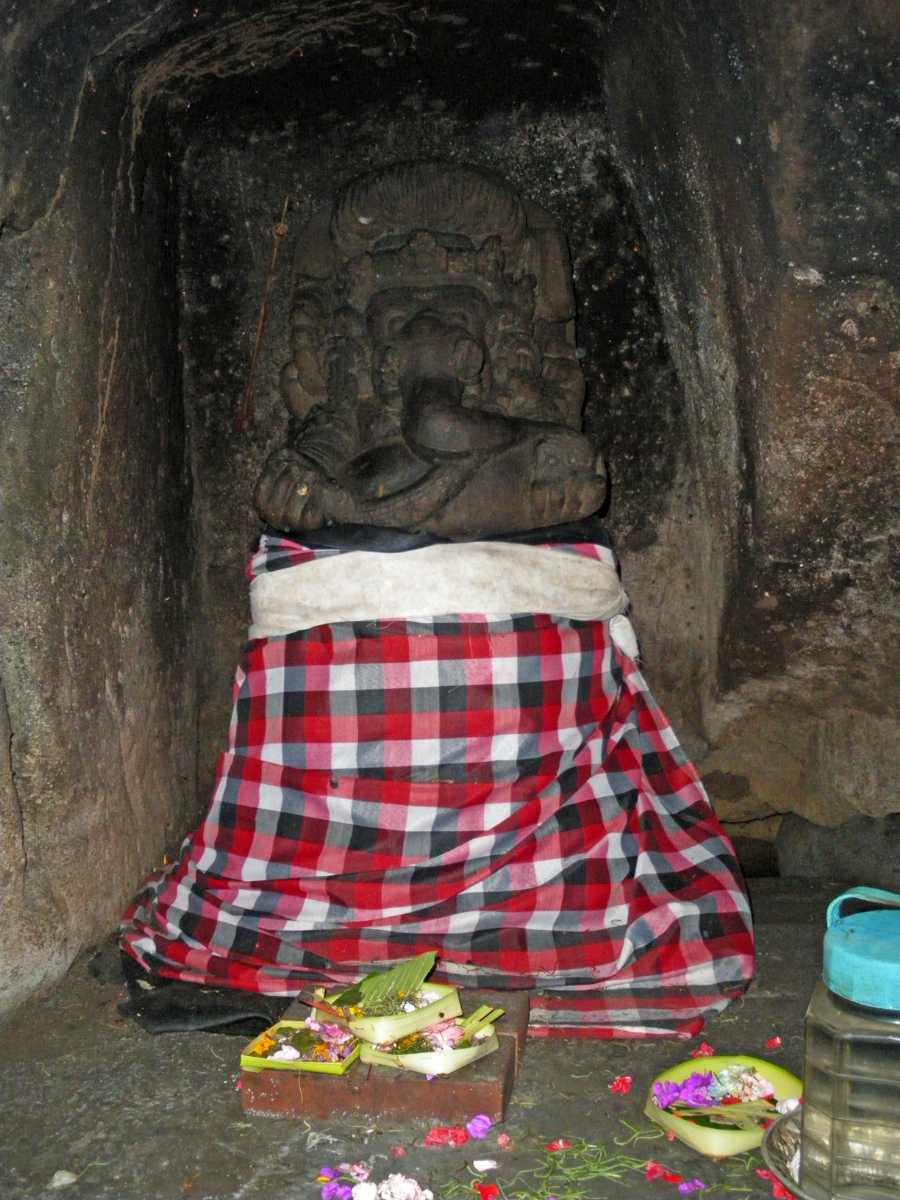
The Goa Gajah caves were constructed in the ancient period to keep evil away from the village area. The primary figure of the cave is the elephant who was prayed to by the locals in the ancient times, believing the deity to to ward off evil. These magnificent caves are crucial to the two major religions of the island, forming a blend of Buddhism and Hinduism through its structures and history which show the cultures of both the religions. You will witness the Hindu sculptures of Shiva and Ganesha as well as various Buddhist relics dating back to the 8th century.
Architecture at Goa Gajah
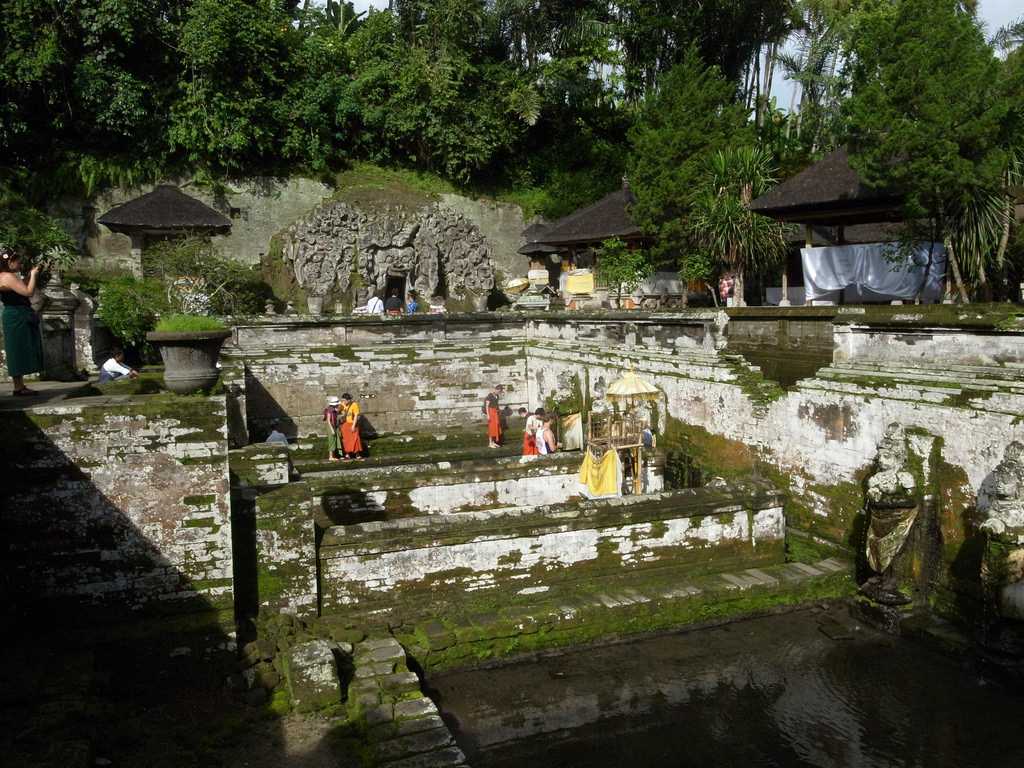
The first Balinese structure you would spot as you walk through Goa Gajah is the Candi Bentar gates. The traditional Balinese structure is a representation of the beautiful architecture of the island. As you begin to enter the premises of the caves your attention will be caught by the entrance to the caves, adorned with the intrigue stone carvings which are a representation of the evil figures. But, the highlight of the entrance is the giant mouth with its mouth wide open that takes you to the interiors of the caves.
Structures at Goa Gajah
Main ground
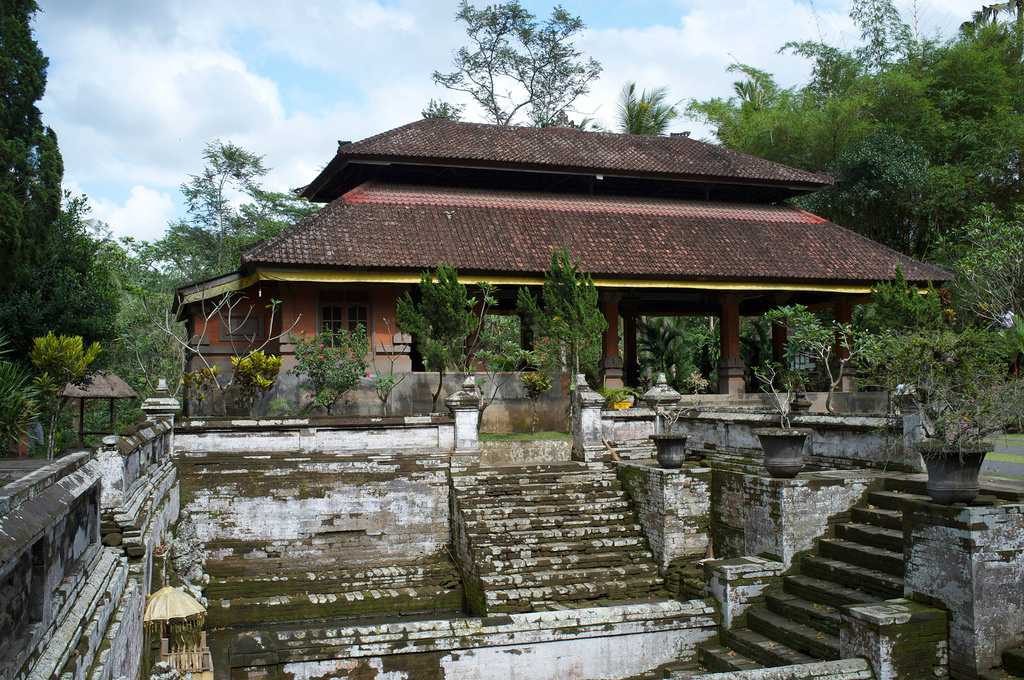
In the ancient times, the main ground was the main centre for meditation now it is lined up with the markets which sell various handicrafts and souvenirs of the Balinese culture.
The Pool and Fountain
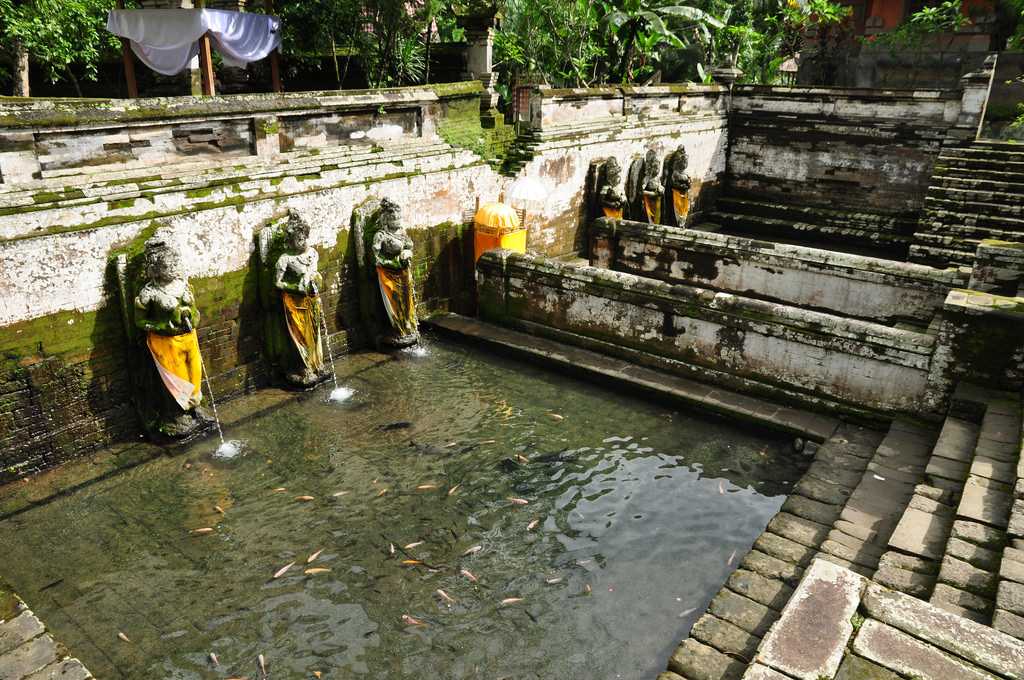
Although the caves were discovered by Dutch archaeologists in 1923, it was only in 1954 that the bathing pool was discovered. The bathing pool is a sacred area for bathing which has seven idols which are believed to be the figures from Hindu mythology. They are the depiction of Hindu goddess figures and they hold vases which fill the water in the ponds. The fountain is also called the "the fountain of youth" which according to the ancient mythology had properties to keep the people youthful.
The Interiors
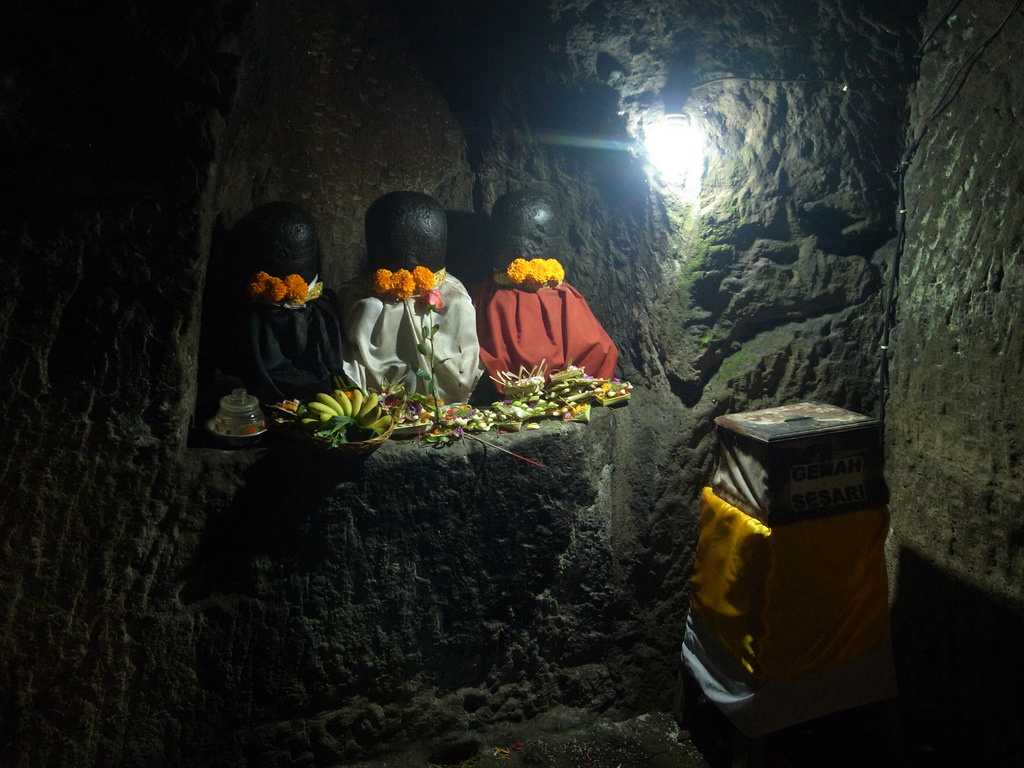
The interiors of the temples are largely inspired by the Hindu mythology. There are three main statues inside the cave. The central and the main statue is dedicated to Lord Ganesha, the Hindu god who has the head of the elephant. The other shrine is dedicated to the goddess named Ratu Brayut who is considered as the protector of children and is considered sacred by the locals. The third shrine is dedicated to Ratu Jhempinis, who was the queen of the ancient Bali kingdom and she was considered very important in the ancient times.
As you move ahead, you will come across more of Hindu influence. There are shrines dedicated to the Shiva. Inside the cave, you would find the three shrines dedicated to Lingam and Yoni as a depiction of sex organs in the Hindu mythology. The Lingam is a shrine of Lord Shiva in Hinduism and it is idolized by Hindu devotees.
The Meditation Area
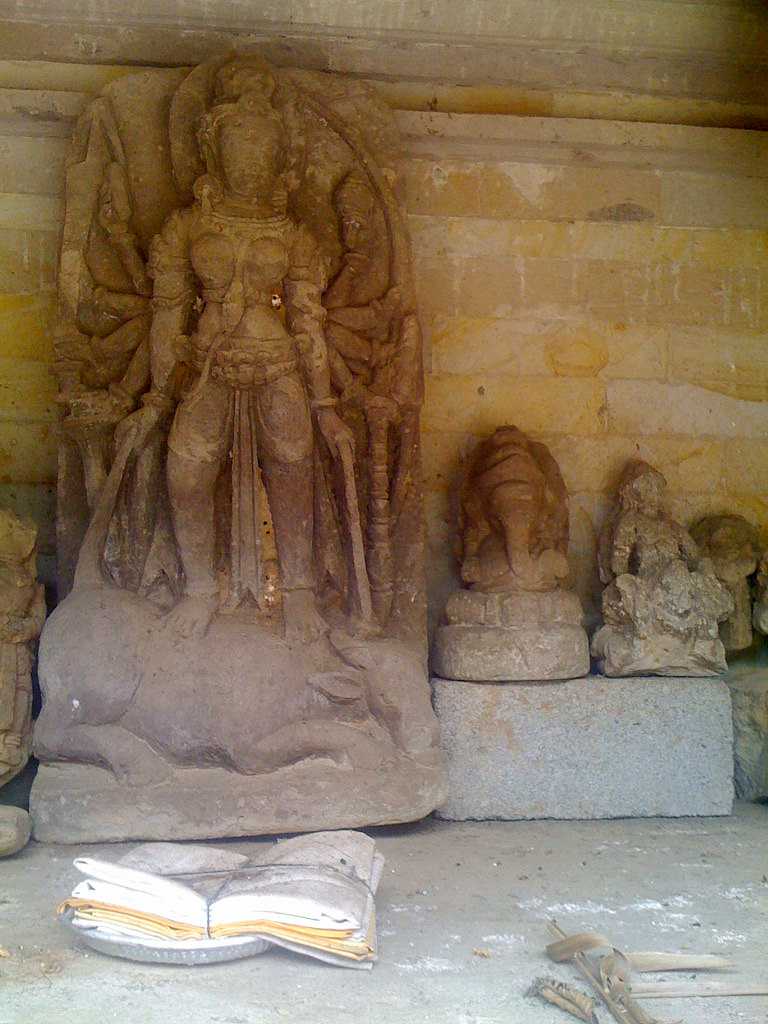
As you walk into the caves, there is a small area for meditation. There were statues in the olden times as you can still see the leftover ruins. Now the area is majorly used for meditation. You can sit here for hours for meditation.
The Buddhist Portion
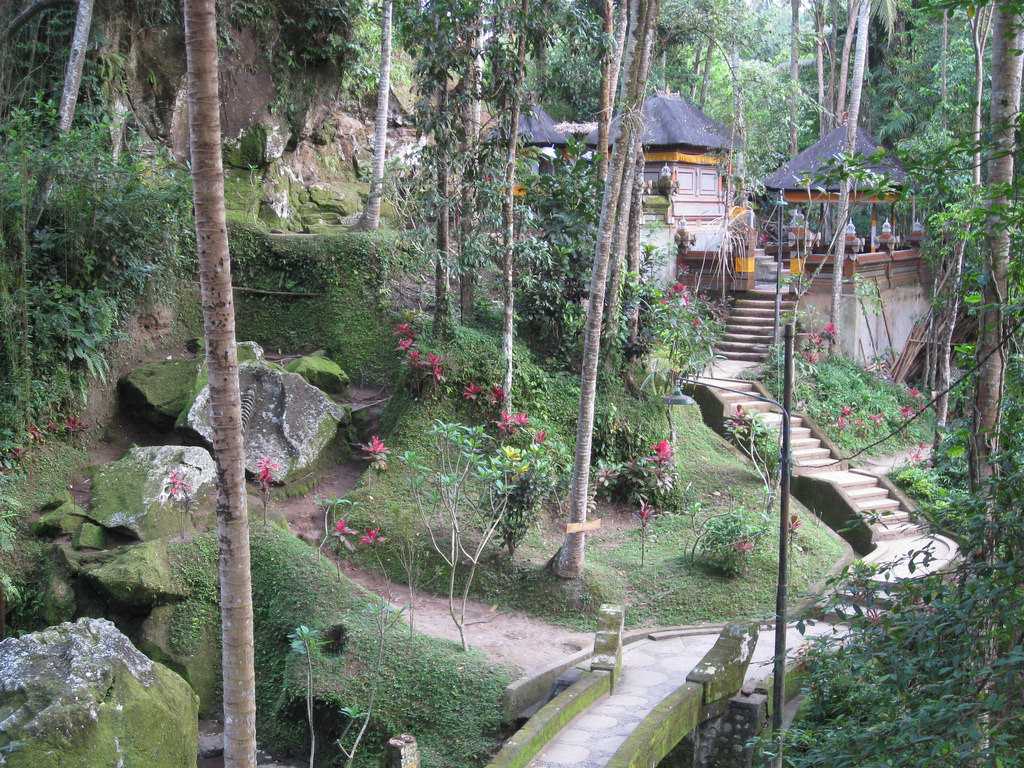
As you walk past the bathing pool, you will come across the old shed which is the area dedicated to the Buddhist section in the complex. The Buddhist complex is located downhill and you need to cross the few rice fields to get to this area. There used to be deity dedicated to Buddha in the premises of the Buddhist section but it was stolen 14 years ago and now guides live in the complex all the time to prevent any further theft. Due to the theft, the Buddhist section is not as highlighted to the tourists as the main caves.
The Jungle Temple
_20180820181626.jpg)
From the Buddha temple, there is a short stroll that takes you through the jungles of the Goa Gajah to the infamous Jungle temple. On your way to the temple, you will witness various devil and monkey sculptures carved out on the stones that are now majorly covered in the moss. Although it is not the highlighted part of the caves and remains unexplored, you can head to jungle temple for a different experience.
Interesting Features of Goa Gajah Caves
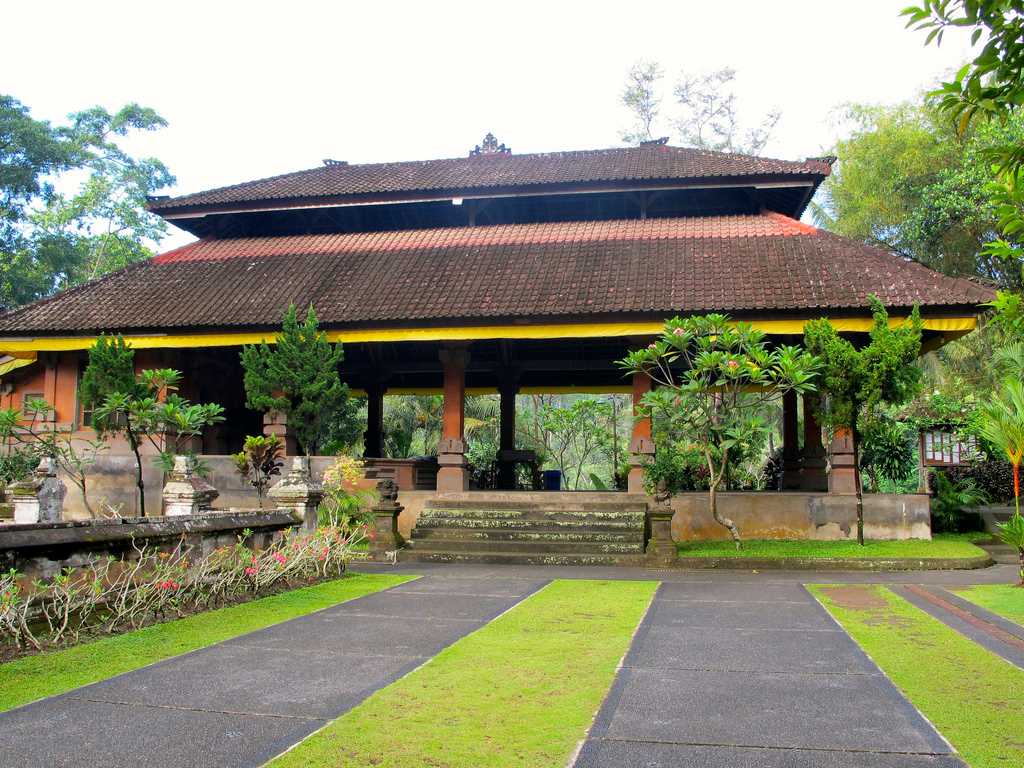
If history isn’t the reason enough for you to explore the caves, it is a great spot for the meditation. You can find a peaceful corner inside the cave which is mostly used by people for meditation. There’s a bit of trek, lot of history and mythology and a decent meditation spot which give you enough reason to visit the ancient ruins of the Goa Gajah.
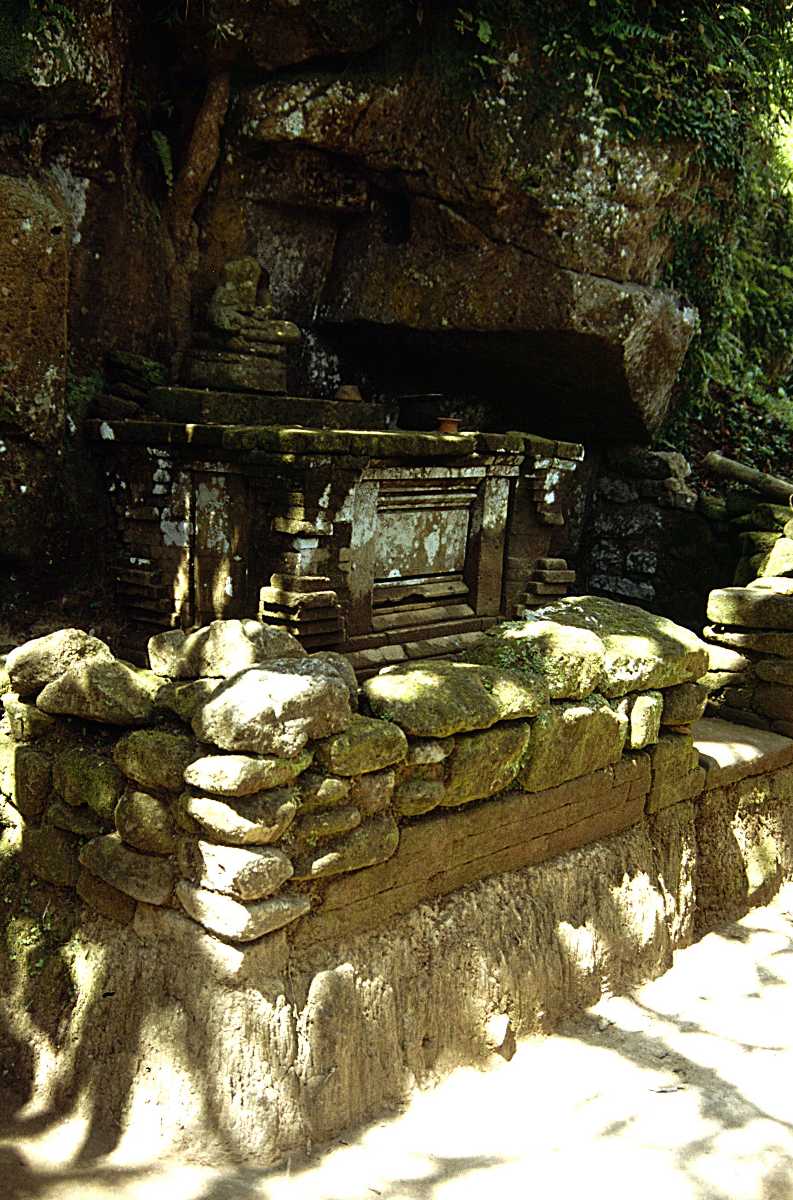
Dress Code While Visiting Goa Gajah Cave
If you are wearing something otherwise, you will get a sarong (scarf) to cover your body while purchasing the ticket. The cost of Sarong is included in the ticket cost.
Tips While Visiting Goa Gajah Cave
- There is a strict dress code to enter the temple complex. Make sure you abide by it.
- There is a long way of stairs to the complex which is not wheelchair accessible. Plan accordingly if you have a specially-abled person with you.
- Please wear comfortable footwear as there is a lot of walking around the temple.
- As it is a religious place please follow the instructions and don’t hurt the religious sentiments.
- You can hire a guide as well if you want the detailed tour of the place. But, if you don’t want the guide make sure you tell them before. There are chances they might ask you for money if they come along with you without you asking for them.
